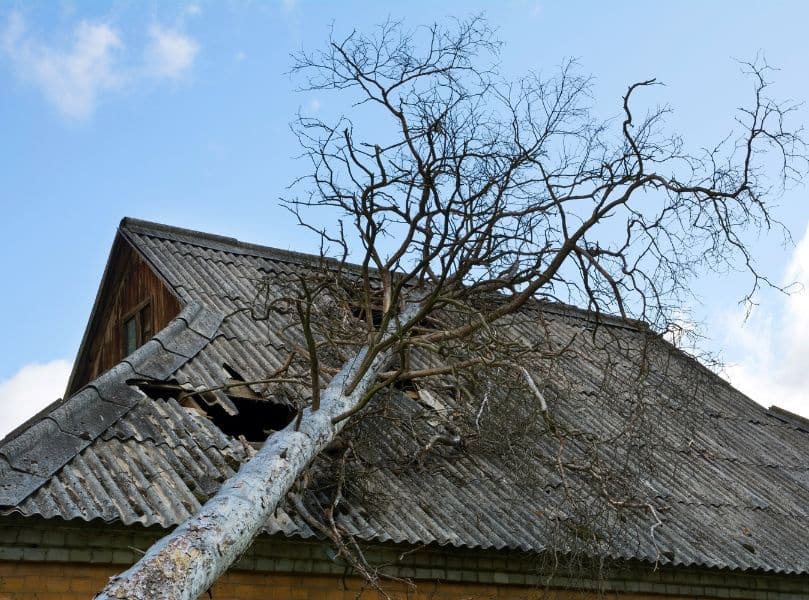
Is Cold Weather Hurting Your Trees? Understanding Frost Trees Damage
As temperatures drop, especially during unexpected cold snaps, many homeowners begin to worry about their plants — especially their trees. While trees are resilient and often capable of withstanding the elements, frost damage can take a serious toll on their health and appearance. Understanding the risks of frost trees damage and how to identify and address it is essential for keeping your landscape healthy throughout the colder months.
In this blog, we’ll explore what trees frost damage looks like, which trees are most at risk, and how to protect your trees from harm during cold weather.
What Is Frost Damage in Trees?
Frost damage occurs when temperatures dip below freezing, causing the water inside a tree’s cells to freeze. This leads to cell rupture and can result in noticeable harm to leaves, branches, bark, and even roots. Depending on the severity, frost damage can stunt growth, cause dieback, or even kill younger or weaker trees.
Common Symptoms of Frost Damage in Trees:
- Wilting or blackened leaves
- Cracked or splitting bark
- Browning needles (for evergreens)
- Sudden branch dieback
- Delayed leafing or flowering in spring
If you notice any of these signs, it’s likely your tree has suffered from frost damage and may need professional care.
Why Does Frost Damage Happen?
Frost damage is primarily a result of fluctuating temperatures — warm days followed by sudden cold nights are particularly problematic. During the day, trees may emerge from dormancy, only to be shocked by a frost event at night.
Other contributing factors include:
- Poor tree health prior to winter
- Improper pruning late in the season
- Young trees with less-developed bark
- Trees planted in low-lying areas (cold air settles in dips)
Trees Most Vulnerable to Frost Damage
While freezing temperatures can impact all trees, some are more susceptible than others. Here are a few that need special attention during cold spells:
- Citrus and tropical fruit trees
- Young ornamental trees
- Deciduous trees that have not yet shed their leaves
- Recently transplanted trees
- Trees with prior insect or disease issues
If you have any of these in your yard, it’s important to take extra precautions when cold weather is forecasted.
How to Prevent Frost Damage
Preventing frost trees damage starts with good year-round tree care. Healthy trees are better equipped to withstand stress caused by cold temperatures.
Here are a few preventative tips:
1. Proper Tree Maintenance
Partnering with a reliable tree maintenance company ensures your trees stay in top condition all year. Routine inspections, pruning, and fertilization strengthen tree resilience before winter hits.
2. Mulching
Apply mulch around the base of your trees (but not against the trunk) to help insulate roots and regulate soil temperature.
3. Avoid Late-Season Pruning
Pruning stimulates new growth, which is more vulnerable to frost. Avoid pruning in late fall to prevent soft, young shoots from forming before winter.
4. Water Before a Freeze
Well-hydrated trees are less likely to suffer frost damage. Make sure your trees are adequately watered during dry winter periods, especially before a freeze.
5. Use Frost Protection Covers
For young or vulnerable trees, use frost cloths, burlap, or blankets to wrap them when temperatures are expected to drop.
What to Do If Your Trees Have Frost Damage
If you suspect trees frost damage, don’t panic. Many trees recover with time and the right care. Here’s what you should do:
1. Don’t Prune Immediately
Wait until spring to assess the full extent of the damage. Premature pruning can harm the tree even more. Damaged branches may still be alive and could recover.
2. Monitor Tree Health
Look for signs of regrowth in spring. If the tree leaves out and shows signs of new shoots, it’s likely to recover.
3. Call a Professional
If you’re unsure about the severity of the damage, contact a professional for an inspection. Our experts at Morris Tree Service can help evaluate the situation and provide guidance.
4. Consider Strategic Pruning in Spring
Once it’s clear which branches didn’t survive the frost, careful pruning can help encourage new growth and reshape the tree.
If you’re located in the Hudson, FL area, don’t hesitate to contact our local experts for tree trimming in Hudson. We’ll assess and restore your trees to keep your landscape beautiful and healthy year-round.
Long-Term Cold Weather Tree Care
While frost events can’t always be avoided, you can build a long-term strategy to minimize damage and promote resilience.
Year-Round Tips for Tree Health:
- Choose cold-hardy species: If planting new trees, select ones naturally resistant to frost.
- Perform annual health checks: Catching signs of disease or insect damage early can reduce a tree’s vulnerability in winter.
- Regular professional trimming: Timely, strategic trimming helps shape the tree for better wind resistance and reduces the chance of weak limb breakage during winter storms.
Cold weather can hurt your trees, especially if they are young, vulnerable, or poorly maintained. However, most trees can bounce back with the right preventive steps and prompt action after damage occurs.
Stay proactive with seasonal care, look for the signs of frost damage, and partner with a trusted tree maintenance company to ensure your trees are always prepared—no matter how low the temperatures drop.
If you’re in Hudson or nearby areas and need expert advice or help with tree trimming in Hudson, reach out to Morris Tree Service today. Let’s protect your trees before the frost hits hard!

